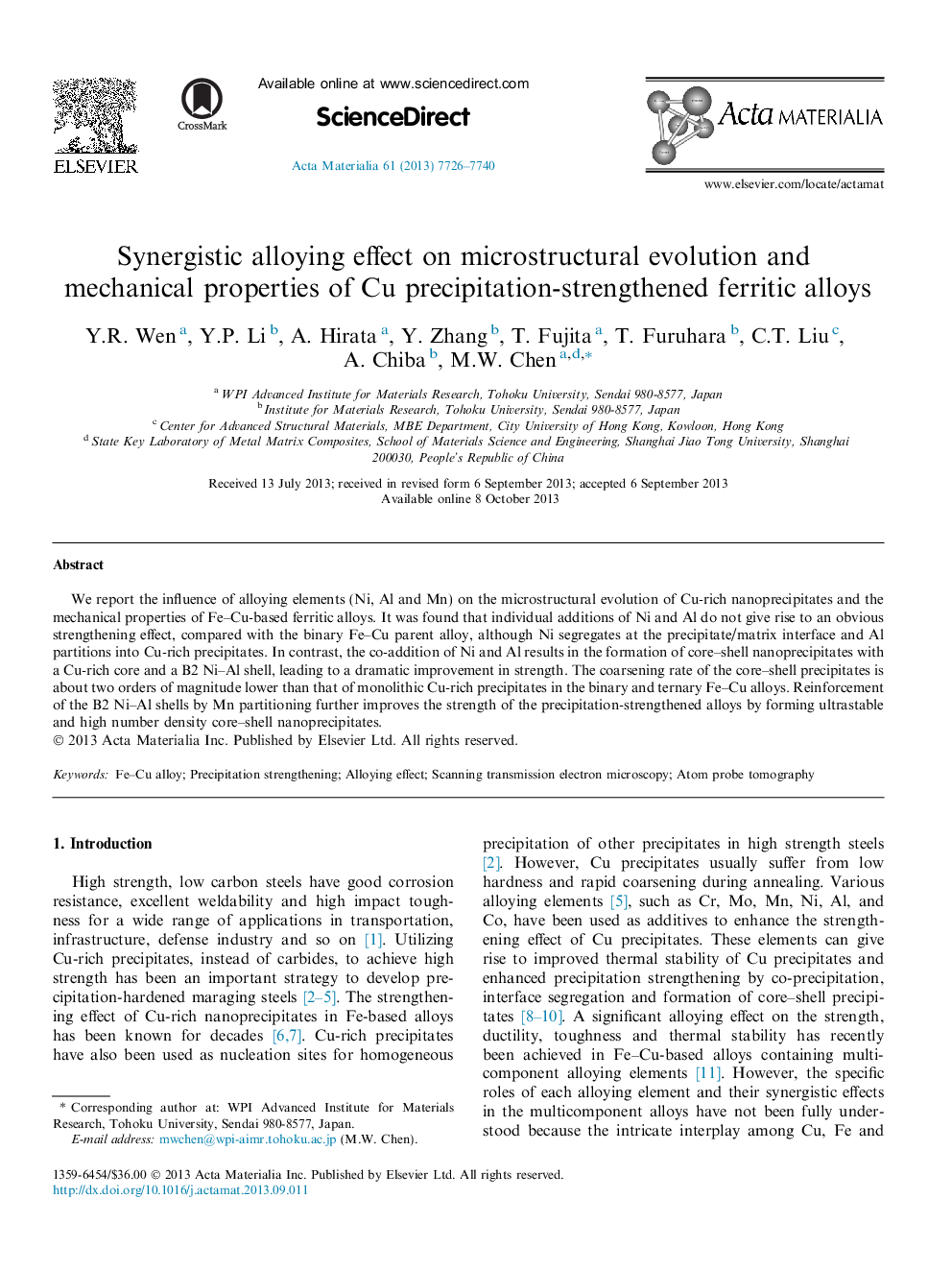| Article ID | Journal | Published Year | Pages | File Type |
|---|---|---|---|---|
| 1446193 | Acta Materialia | 2013 | 15 Pages |
We report the influence of alloying elements (Ni, Al and Mn) on the microstructural evolution of Cu-rich nanoprecipitates and the mechanical properties of Fe–Cu-based ferritic alloys. It was found that individual additions of Ni and Al do not give rise to an obvious strengthening effect, compared with the binary Fe–Cu parent alloy, although Ni segregates at the precipitate/matrix interface and Al partitions into Cu-rich precipitates. In contrast, the co-addition of Ni and Al results in the formation of core–shell nanoprecipitates with a Cu-rich core and a B2 Ni–Al shell, leading to a dramatic improvement in strength. The coarsening rate of the core–shell precipitates is about two orders of magnitude lower than that of monolithic Cu-rich precipitates in the binary and ternary Fe–Cu alloys. Reinforcement of the B2 Ni–Al shells by Mn partitioning further improves the strength of the precipitation-strengthened alloys by forming ultrastable and high number density core–shell nanoprecipitates.
